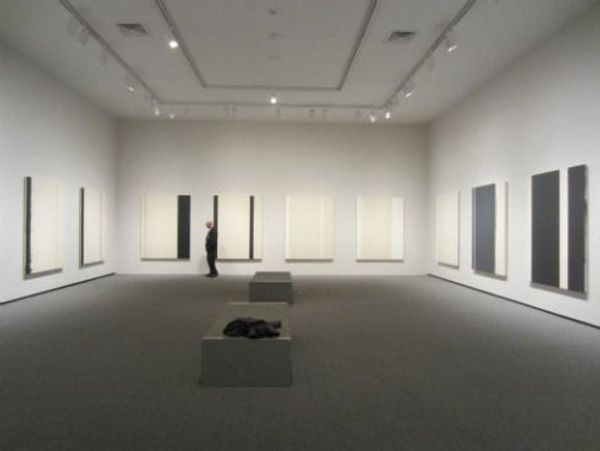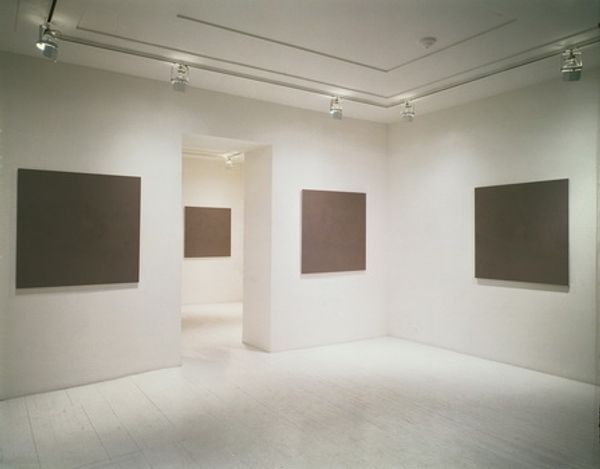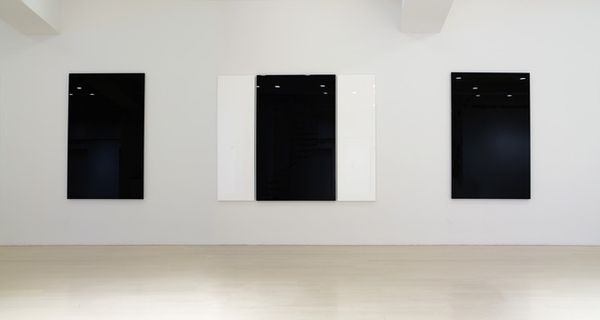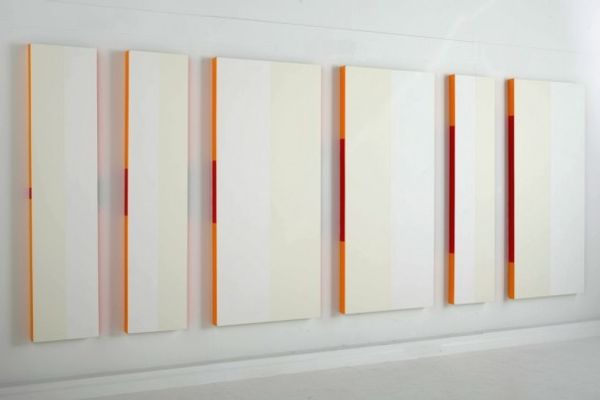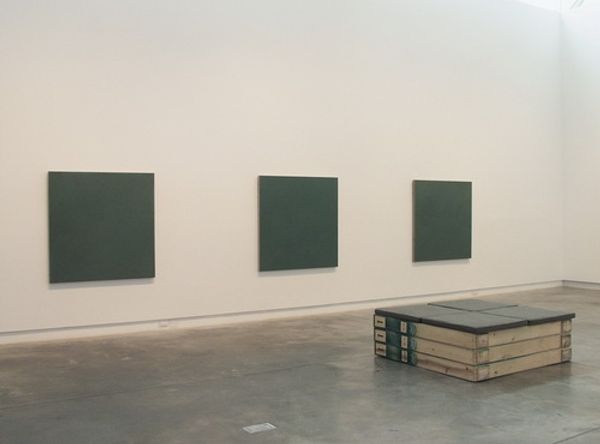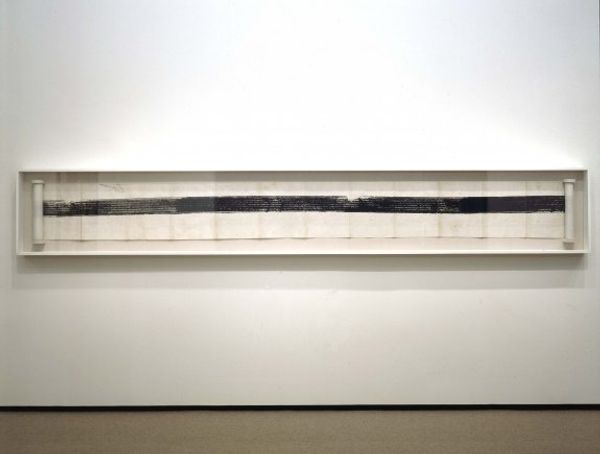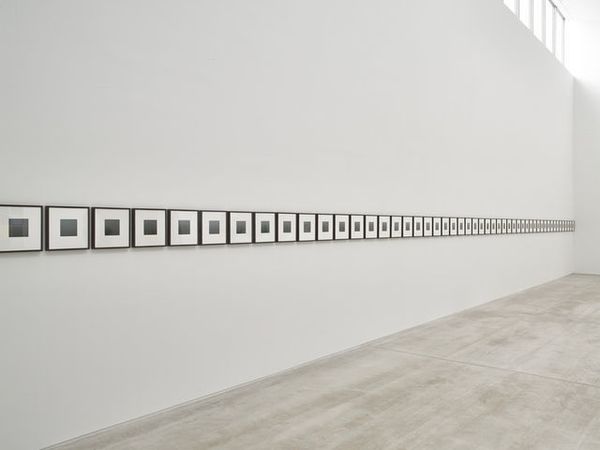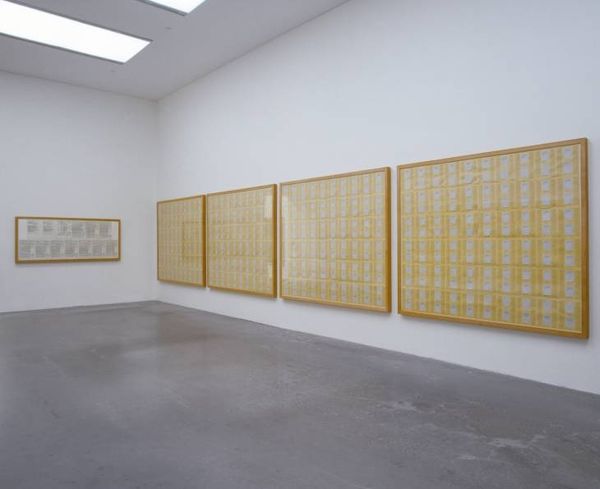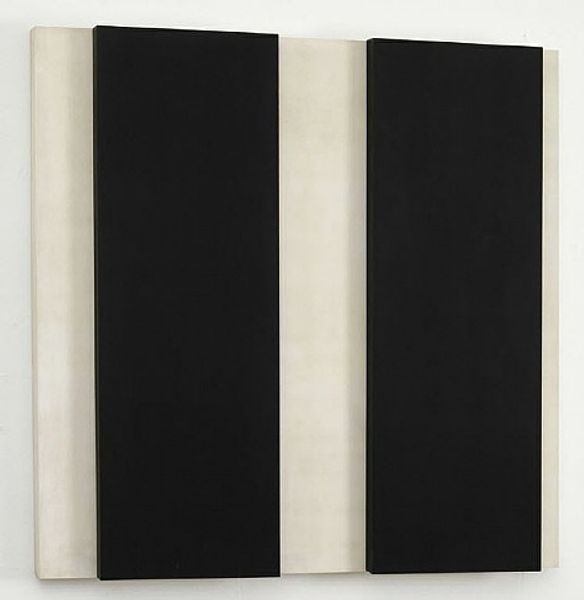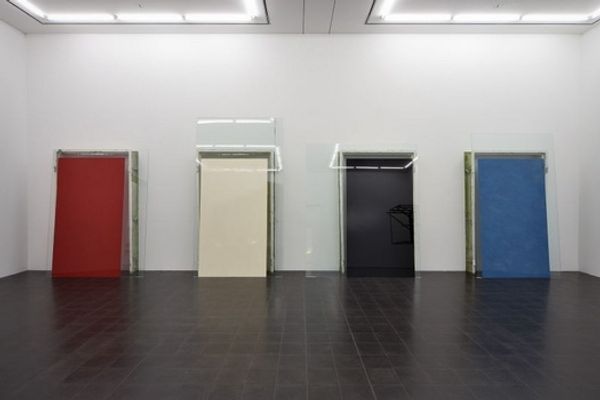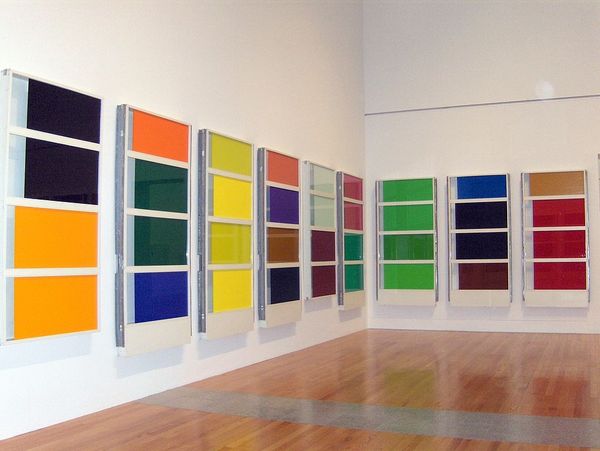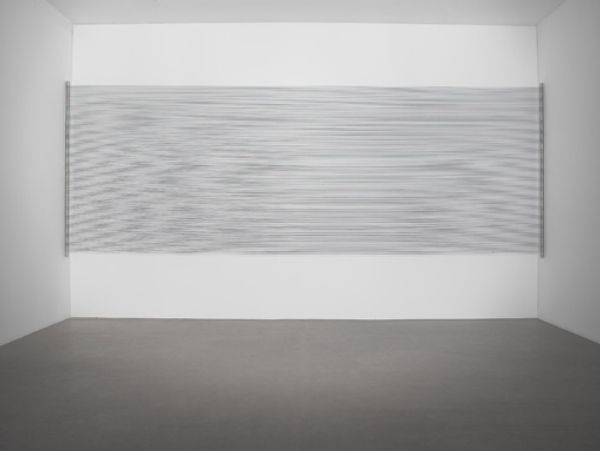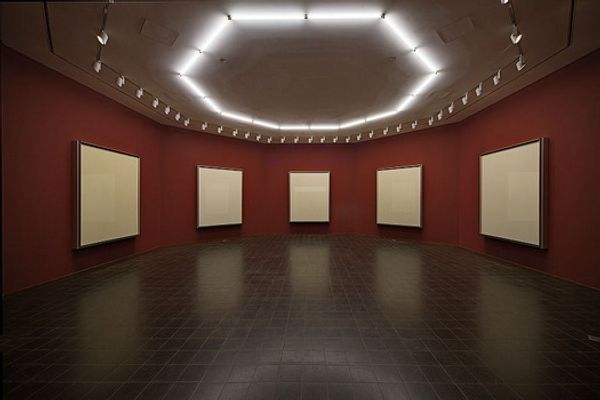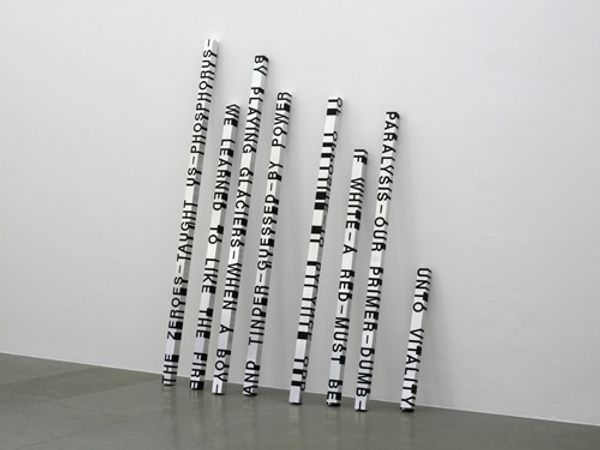
painting
#
abstract-expressionism
#
abstract expressionism
#
painting
#
minimalism
#
geometric-abstraction
#
line
#
modernism
#
monochrome
Copyright: Barnett Newman,Fair Use
Curator: Standing before Barnett Newman's "Stations of the Cross: 1958-1966," one is immediately struck by their solemnity. A procession of canvases, stark and almost monastic. Editor: Yes, a kind of visual dirge. The monochrome palette, predominantly off-white with those severe black lines... it feels like a contemplation of loss and, perhaps, injustice. It's undeniably moving, in a somber way. Curator: These paintings are indeed powerful in their reduction. Note the compositional elements; each canvas features vertical bands Newman termed “zips,” bisecting the picture plane, but consider the variations in placement and texture from piece to piece. It’s in these slight shifts that the formal interest lies. Editor: For me, the "zips," aren't simply formal devices. Looking through the lens of history, the series, started after Newman’s near fatal heart attack, resonates with the immense societal anxieties during the Cold War and Civil Rights era. This is more than just aesthetic play; it's an interrogation of human suffering and resilience through a visual language that avoids easy answers. Curator: Undoubtedly. Yet Newman’s oeuvre often eschewed direct political interpretation, pushing toward the sublime. He wanted to create a direct, unmediated experience for the viewer. The scale alone invites contemplation – notice how each work dominates your field of vision, demanding your undivided attention. Editor: The scale does provoke a bodily awareness. Yet, thinking about the biblical Stations of the Cross, I'm reminded of communities, particularly those of color, who have historically found solace and resistance in the stories of Christ's suffering. Seeing it displayed so grandly evokes conversations about faith and collective action. Curator: Your point speaks to the fascinating duality within these works: intimate, deeply personal experiences juxtaposed with expansive concepts. In viewing the entirety, viewers confront a visual syntax developed around the line as not merely divider but as point of unification. Editor: Precisely. And recognizing the multitude of meanings, and socio-historical contexts within these simple lines, reminds us that even in seeming abstraction, there's an inherent connection to lived experience. The beauty of abstraction resides in the intersectional ways we create, read and view art.
Comments
No comments
Be the first to comment and join the conversation on the ultimate creative platform.
